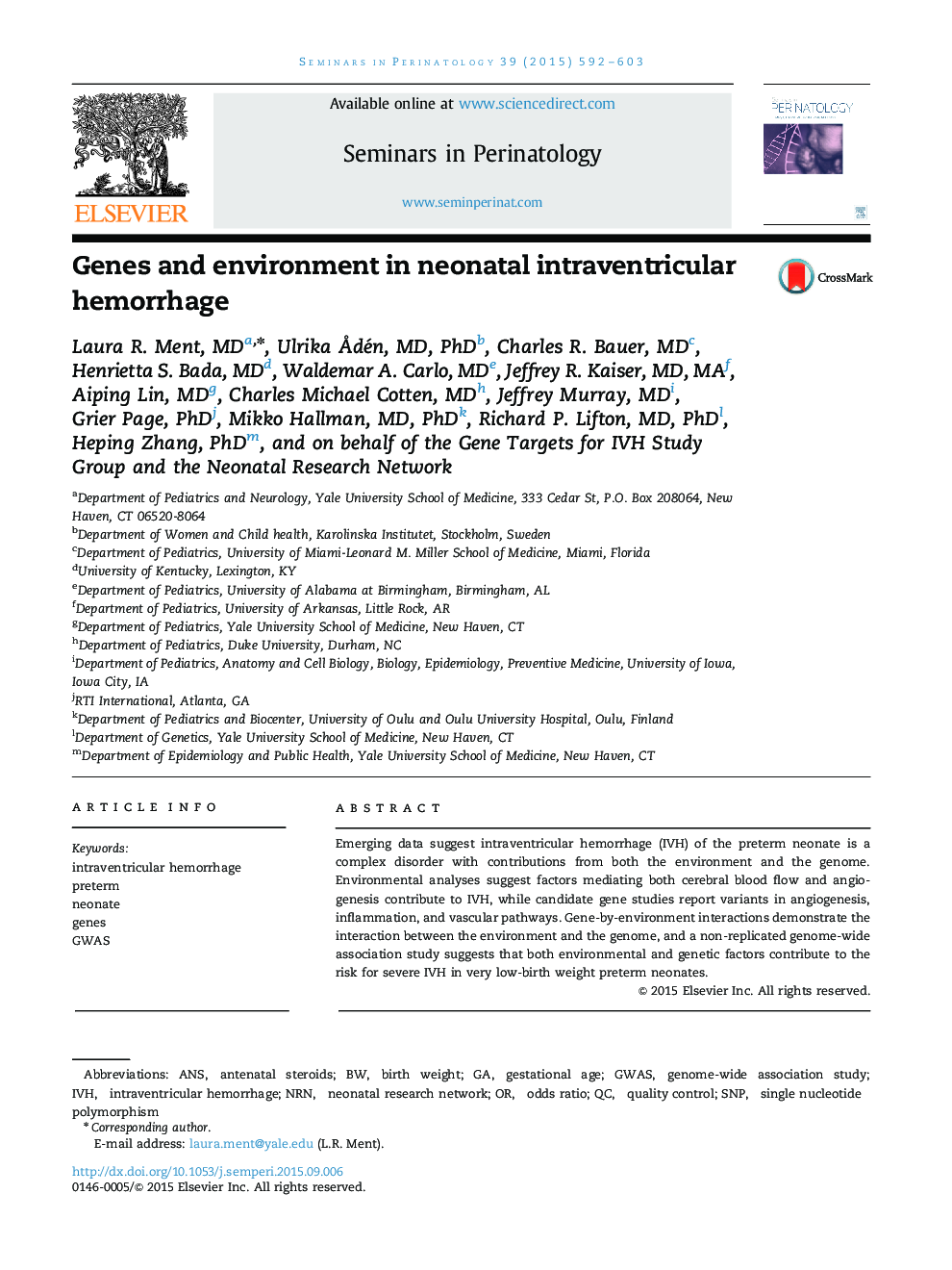| Article ID | Journal | Published Year | Pages | File Type |
|---|---|---|---|---|
| 3836141 | Seminars in Perinatology | 2015 | 12 Pages |
Abstract
Emerging data suggest intraventricular hemorrhage (IVH) of the preterm neonate is a complex disorder with contributions from both the environment and the genome. Environmental analyses suggest factors mediating both cerebral blood flow and angiogenesis contribute to IVH, while candidate gene studies report variants in angiogenesis, inflammation, and vascular pathways. Gene-by-environment interactions demonstrate the interaction between the environment and the genome, and a non-replicated genome-wide association study suggests that both environmental and genetic factors contribute to the risk for severe IVH in very low-birth weight preterm neonates.
Keywords
Related Topics
Health Sciences
Medicine and Dentistry
Medicine and Dentistry (General)
Authors
Laura R. Ment, Ulrika Ådén, Charles R. Bauer, Henrietta S. Bada, Waldemar A. Carlo, Jeffrey R. Kaiser, Aiping Lin, Charles Michael Cotten, Jeffrey Murray, Grier Page, Mikko Hallman, Richard P. Lifton, Heping Zhang,
